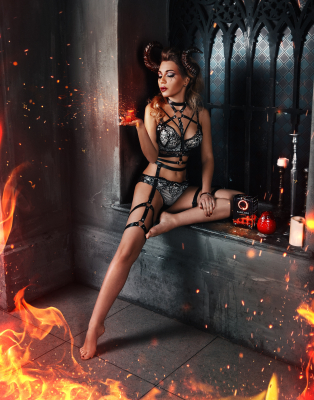Possession movies, even when they are highly religious in context, bring in huge crowds of fans, starting with The Exorcist (1973) and continuing on throughout the years, we never really get down to the brass tacks of demonic entities, who they are—or might be—and the people they have affected. Demon lore is complex in every religion and affiliated culture, there are elaborate organizational schemes for demons dated back from the 16th and 17th centuries and yet we still have so little understanding of them. For the many ills and misfortunes that plague the human race, there is the possibility of a demonic association that leads to exorcisms in many cultures. Specifically, in Catholicism, exorcisms deal with demonic possession, in which demons are said to battle for control of the soul of the victim they have targeted, these practices date back to 1614.
The Demons that Invade Our Lives
Christian demonologist Johann Weyer estimated that there were nearly 7.5 million demons that served as minions to 72 different princes of hell. Each of these demons belongs to a class of demons; to name a few, there are demons that attack people in their sleep, drain vitality, or possess those who are struggling with their own identity. So, let’s take a look at the different types of demonic entities that go beyond the typical Catholic exorcism expectations.
The Succubus
During the Middle Ages, authorities within the Christian religion asserted the existence of sex demons, which they furthered that to insinuating that sex with such demons was a sign of witchcraft. Although it’s a widely accepted possibility in the paranormal community, the stories and theories of such acts are described as horrific to experience. To be clear, while this may sound like an exciting ride for some lonely people out there, it’s not something that anyone in their right mind would purposefully pursue—it’s never consensual.
The Djinn
Between 100 and 400 AD, the Testament of Solomon was written, which served as a list for Hebrew, Greek, Assyrian, Babylonian, Egyptian, and Persian demons. The Djinn are self-propagating, malicious, yet mortal demons. They are an invisible creature by nature but have shape-shifting abilities so they may better stalk their prey. Solomon was able to control these types of demons which he called djinn with his magical ring and he would frequently treat them as his own personal slaves by making them transport him wherever he wished upon their backs.

The Nightmare
The story of this nocturnal visitor originated in the ancient world, in which a spirit or demon would come into the room of its sleeping victim, male or female, to incapacitate the individual and feed off of their vitality. In all reported cases, it is said the victim awakens to either a heavy weight on their chest or one that starts at their feet and progresses to their chest, either way, they are unable to move out from under the weight of the night hag. As they’re feeding off of the individual, the victim feels as if they’re suffocating and paralyzed, despite being fully conscious. Victims of the night hag end up reporting feeling groggy, sick, and otherwise exhausted both mentally and physically the next day.
The Vampire
Now just wait, you’re probably conjuring up an image of Dracula hunched in a dark window of his castle in Transylvania, brooding and dangerous. The concept of the vampire in modern culture, especially since Stoker’s rendition, are the undead who return to kill and torture the living, but the actual origin is somewhat different. Older than the Slavic version of Dracula is a supernatural and demonic entity that did not actually take human form and it spans the world with small variations.

Georgia-based author and artist, Mary has been a horror aficionado since the mid-2000s. Originally a hobby artist and writer, she found her niche in the horror industry in late 2019 and hasn’t looked back since. Mary’s evolution into a horror expert allowed her to express herself truly for the first time in her life. Now, she prides herself on indulging in the stuff of nightmares.
Mary also moonlights as a content creator across multiple social media platforms—breaking down horror tropes on YouTube, as well as playing horror games and broadcasting live digital art sessions on Twitch.


